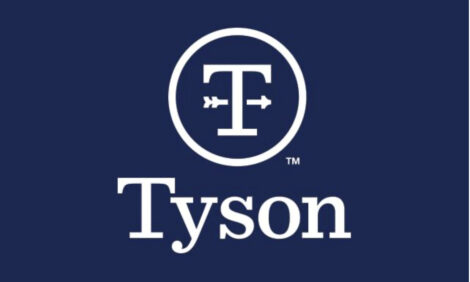



Meat and Poultry Cutbacks will Come – Eventually
US - Total meat and poultry output remains near or above year-ago levels. That statement may strike readers as odd given all of the talk about lower output due to higher costs, writes Steve Meyer for the National Hog Farmer.As Figure 1 shows, meat and poultry production fell short of year-ago levels in all but three weeks during the first half of the year and all but five weeks through the end of July.

Since Aug. 1, total meat and poultry production has fallen short of last year’s level during only two weeks. So where are the cutbacks? They’ll come – eventually.
There are three primary patterns for meat and poultry supplies and prices – trends, cycles and seasons. Sometimes the patterns are additive to one another and sometimes they are offsetting. Some of them develop more or less predictably and some of them are more impacted by current economic conditions. And then there are impacts from new technologies or one-time impacts of weather or disease. This year’s situation reflects some influence from all of these factors.
All of the four major meat/poultry species were looking to expand last spring. The trend for output was up. The dairy herd was growing. Beef cow-calf operators, especially those in the northern plains, were looking to rebound from last year’s huge drought-driven liquidation in the southwest. Hog producers were growing their breeding herds slowly, but adding output through bigger litters. Broiler companies were cautiously growing the breeder flock following a huge reduction in 2011. Turkey companies were growing their productive capacity following several very good years.
Total output lagged year-earlier levels because a) this year’s output was negatively impacted by the cuts of 2011, and b) a move to growth pulls females out of the slaughter mix for beef, dairy and pork. At the end of June, total meat and poultry production was down 2.2% vs. 2011, but expectations for 2012 and beyond were for added output.
That all changed when the depth and breadth of the drought of 2012 kept growing. Hog producers moved from expansion to contraction mode. Heifers that had been held for replacements were put in feedlots. The broiler breeder flock fell to its lowest level in nearly 26 years. Turkey output has kept growing seasonally, but turkey egg sets and poult placements have dropped sharply relative to one year ago.
But while high feed costs suggest market weights should go lower, the fed-cattle weights have risen to record highs for both steers and heifers. I think the reason is simple: Zilmax (Merck Animal Health) and Optaflexx (Elanco Animal Health) have significantly reduced the marginal cost of the last few pounds of gain for both sexes. Thus, marginal revenue (i.e., the per-pound price of fed cattle) is greater than marginal revenue for a longer time period, resulting in higher weights and higher total output. The normal seasonal pattern sees steer and heifer weights top out in early October and mid-November, respectively. I see nothing in the use of beta-agonists that should change this timing, but the peaks will apparently be at about 880 lb. for steers and 810 lb. for heifers.
Pork producers’ efforts to lower market weights could be accomplished only by shipping hogs early, thus swelling weekly slaughter runs. Higher slaughter numbers plus weights that were “lower than would be normal,“ but still larger in most weeks than the week before pointed to higher pork output since August.
When will the “cuts“ finally look like “cuts“? It may well be past the end of this year. Turkey output will peak within the next two weeks. Pork production usually peaks in late November or early December. The downside of the seasonal pattern for beef carcass weights is either here or very near. Fed cattle numbers will begin a downtrend into what could be a sharp reduction by Q2-2013. The lowest weekly egg set total since 1997 will eventually mean sharply lower broiler slaughter as well.
Lower supplies are on the way. They will bring revenue relief to producers, but also mean higher prices to consumers. My fear is these higher prices will be high enough that some consumers simply won’t be able to afford to eat meat and poultry – or nearly as much of it as they have in the past. That is not the way to build a long-term clientele, but we have no other choice at the moment.
Further ReadingYou can view the full report by clicking here. |







